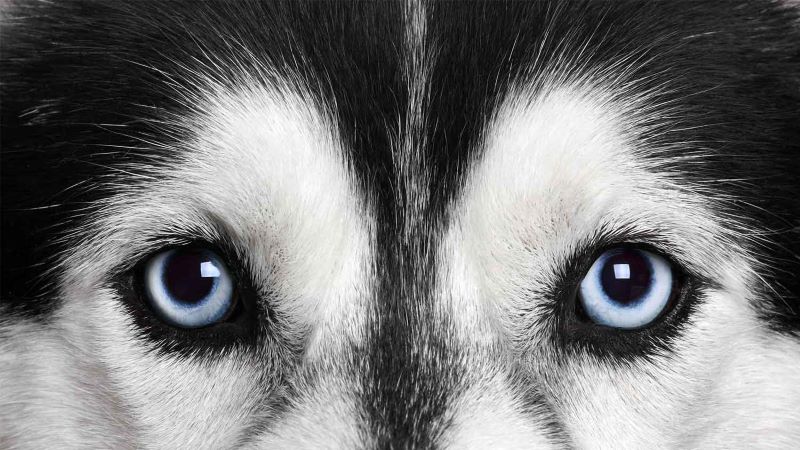When I began my research for this post, I was fascinated to learn some cool things about a dog’s eyes. Many of the ailments that can plague dogs are better understood when we grasp just how a healthy eye functions. So, let’s break it down a bit.
A dog’s third eyelid
Dogs have three eyelids. Whaaaat? That may sound crazy, but the third eyelid is one of a dog’s many superpowers, protecting the eye and cornea and spreading tears across the surface of the eye. Pretty cool, right? The third eyelid is officially called the nictitating membrane and is a thin, opaque tissue that hides from view in the inner corner of the eye. And those long whiskers (called supraorbital whiskers) you may notice above your dog’s eyes? They have a purpose, too. When these whiskers encounter a foreign object (think sticks, another dog’s paws, your finger), the dog’s “blink reflex” jumps into action and causes his/her eyes to close to avoid getting scratched or poked.
So, now that we know a little about the anatomy of a dog’s eye, let’s look at some common eye issues.
Cherry eye
A dog’s third eyelid is also home to a tear-producing gland. Ligaments hold this gland in place and out of sight. But if the ligaments are weak, the gland can pop out of its normal location, looking a bit like a cherry. This condition is genetic, so it often affects both eyes. Cherry eye can be treated with a simple surgery to attach the gland back in a more normal position.
Dry eye in dogs
A dog’s tears serve many purposes. They remove potentially damaging material from the surface of the eye and nourish the corneal tissues. So, when fewer tears than normal are produced, corneal ulcers can develop. Dry eye or keratoconjunctivitis sicca (KCS) can be treated with artificial tears, but sometimes needs surgical repair. In severe cases, a veterinary surgeon can redirect a duct carrying saliva to moisten the eye.
Conjunctivitis (pink eye) in dogs
Thought only your kids could get this one? Think again! Conjunctiva is a fancy name for the mucus membranes that cover the inside of a dog’s eyelids. Pink eye is inflammation of the conjunctiva. When a dog has pink eye, the conjunctiva appears red and swollen, and there may be some eye drainage and discomfort. Physical irritation, infections, and allergic reactions can all cause conjunctivitis, so it is more of a symptom of a disease, not a disease itself. Once you determine the cause, that will direct treatment.
Sterile saline eyewashes will flush a physical irritation such as dust or an eyelash. Bacterial eye infections usually require a prescription antibiotic eye drop. Although it is not likely that you will catch pink eye from your dog, it is still a good idea to wash your hand after administering medication or drops.
Discharge from a dog’s eyes
If your dog has any type of discharge from his/her eye, it is important to make a vet appointment. Clear discharge could mean he/she is suffering from allergies or has a foreign object in his/her eye. Yellowish green or pus-like discharge could be an indication of something more serious, like an inflammation of the lining of the eye.
Keeping your dog’s eyes healthy
It is important to make and keep an annual wellness vet appointment. When your vet knows your dog’s “normal” it is easier for him/her to detect a problem. When you enroll your dog in pet health insurance, you can afford to provide the best veterinary care when you need help getting to the bottom of eye issues. Get a quote today!

